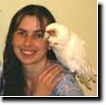Choosing Breeding Pairs
Kristen Reeves, Meadowlark Farms Avian Supply, Inc.
Choosing the right pair of birds can make or break the success of your breeding season. Below are a few more things to consider before breeding your birds...
AS WITH PREPARING THEM TO BREED, SELECTING THE RIGHT PAIR IS CRUCIAL:
As discussed in the Breeding Gouldians article, maturity is the first thing to consider! Yes, I'm repeating myself, but...before you get too carried away, you also want to be sure you have a very healthy pair of birds in top condition that get along well with one another.
For the best chance of success, they should be AT LEAST a year old, but preferably two years old. Breeding issues all seem to revolve around maturity, or lack thereof, in the breeding pair. If the hen is too young, she could experience egg binding - a potentially deadly problem, or she might toss eggs and/or chicks.
A young cock bird, in his eagerness to impress the hen, may try to continue building the nest right over the top of the eggs! AND a young pair may feel there is an invader in the nest and toss or peck at chicks as they hatch. If you wait until they are mature, you should avoid many of these issues!
But as always, condition is the lock, nutrition is key.They must be fed well to produce well and raise their young well! Skimping on nutrition will give you exactly what you pay for. Feed them cheap seed and less than stellar supplements and you’ll get weak birds with less than stellar health.
SELECTING A PAIR:
Choose your birds wisely.
First, it is not a good idea to breed siblings unless you have prior breeding experience and are pairing for specific mutations (line breeding - even then, breeding sibilings is never recommended). Breeding siblings can lead to smaller, less robust birds and other health issues in the chicks associated with potentially weak genes. Some chicks may not even hatch and may die in the shell.
Be sure not to pair birds with a potentially "lethal" gene. White breast to white breast, blue to blue, etc. These genes are exceptionally weak STILL and can produce some very weak chicks. In addition, these mutations are genetically weak. Whenever you remove a bird’s ability to express its NORMAL color, you are also removing some immunities and nutrition absorption properties.
With that said, I think it's obvious I’m not a fan of mutations and do not breed them deliberately. I have spent years perfecting my breeding stock and breeding OUT mutation colors to bring my flock back to pure natural colors. Why? I wish to preserve the natural colorations. The Lady Gouldian Finch is an endangered species and no matter how many mutations we produce it will not preserve those natural colors. With the explosion of the blue and yellow mutations there will be very few normals left from which to produce healthy young OR to breed back to produce mutations! Losing this species in the form that God created it is unacceptable to me.
I will not breed blue to blue or white breast to white breast. I have seen strong chicks and weak ones, but prefer to never produce chicks who are genetically weak deliberately. Pairs who produce weak chicks will never be paired together again. It is also why I produce very few mutations. Those I do produce are from split parents only. Many other breeders will argue this point - let them! I own breeder birds from all over the United States, Canada and Puerto Rico - it does not matter where the birds are from or for how long the lines have been bred. Mutations are and always will be weaker than normals. It is my humble opinion that combining these colors is just bad practice. Folks continually contact me regarding sick Gouldians. 9 times out of 10 the birds are mutations. Uh hello??? That should tell them something! As always, this is something you'll have to decide for yourself. I can only speak from my personal experience.
As you can see, I'm very passionate about this topic!
NATURAL SELECTION VS HAND PAIRING
When breeding your birds, you may allow them to choose their own mate, or if you are interested in a particular color result, hand select the birds you wish to breed. Whichever method you choose, it is important that both hen and cock are interested in each other and compatible.
COURTING:

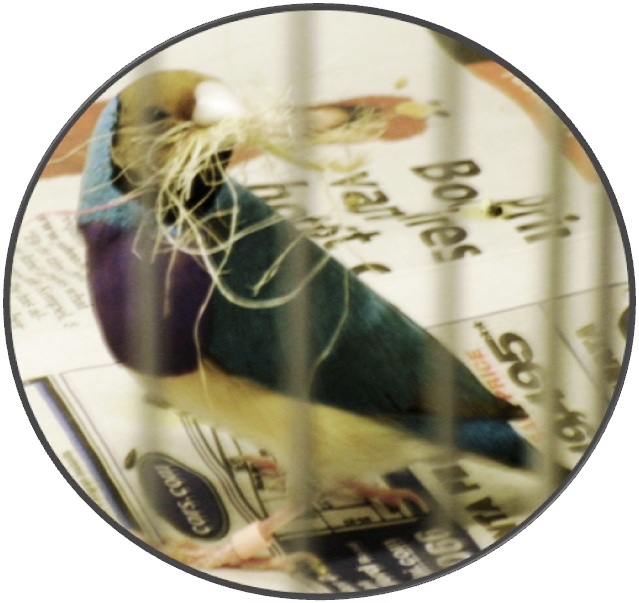 Once the birds are in condition and begin courting, you will begin to notice the courtship "dance" in which the cock sings to the hen then begins to jump up and down (while singing).
Once the birds are in condition and begin courting, you will begin to notice the courtship "dance" in which the cock sings to the hen then begins to jump up and down (while singing).
Sometimes a cock will bring a beak full of nesting materials, but not always. He may lower his head and shake it quickly from side to side.
The hen, if interested, will respond in kind by leaning in close to the cock while he sings. She may flick her tail toward the cock and/or lower her head and shake it too. She will also flick her tail quickly as if her tail were humming bird wings. This response indicates that she has accepted the cock and is willing to raise a family with him.
COLONY BREEDING:
Being the control freak that I am, I personally prefer to pair the birds myself and will not colony breed. This allows me to keep detailed records of the genetics and breeding results for each pair - and the production of the hen. I refuse to pair siblings, and placing them in a colony breeding situation does not ensure this won't happen. Just because you see two birds in the nest box together does NOT mean the cock the hen is sitting with is the father of the chicks she hatches! Hens will often breed with other cocks in the same cage if available. Hens in a colony situation will often lay eggs in a "group" nest. Who's your daddy? No way to tell! I never want that to happen. I NEED to know who the parents are at all times so that I can give my clients detailed information about each bird they purchase. They need to know, and I need to be able to supply that information! I refuse to purchase birds if the seller can't give me detailed genetic information. I can't possibly expect my own clients to buy from me if I don't do that same!
HAND PAIRING:
If you choose to pair birds yourself or if you only have one pair, you will want to pay close attention to the dynamics of their relationship. When hand pairing, it may take several weeks for the hen to accept the advances of the cock – or they could just hit it off right away!
The best way to ensure they are attracted to each other is to separate them during the off season. Read more about that in our Time to Separate the Sexes article.
When the hen's beak turns a deep glossy black, she is ready to breed. The color at the tip of the male’s beak will also increase in depth of color and the color will spread somewhat up the beak toward the head. You can then set up your breeding cage and introduce the pair. I will typically set the male up for about a week in the breeding cage before introducing the hen. This allows him to "stake out his territory" and check out the nesting locations.
Once you cage them together, be certain to watch them closely for any signs of incompatibility. You do not want one bird attacking the other and potentially injuring each other! But remember, all new marriages have their little problems. The birds may fight a bit, but as long as they don't get too rough, they will be fine. Just watch to make sure there is no "dirty" fighting where one bird is pinned down and the other is attacking it! That is a bad sign and the birds will need to be separated.
If for some reason the hen will not accept the advances of the cock, place a second cock bird in the breeding cage. Once the hen sees the second male, she will usually accept the advances of the first bird. As soon as you notice the cock birds fighting, or the hen and cock in the nest together, remove the second cock bird. You should have no problems from here on out if both birds are ready for the breeding season.
On rare occasion, a hen just won’t like any mate you place with her. When this occurs, it is best to remove her from your breeding program. Try her again next season, but if she continues to deny the advances of the cock birds you offer her, it’s time to remove her entirely from your program.
PREVIOUS BREEDING RESULTS:
Another item to keep in mind is previous breeding results.
If you know you have a successful pair, chances are good that they are highly compatible and will continue to successfully raise additional clutches. If a pair does not lay or lays infertile eggs, do not pair them again until they are older (if young) - or pair them with different mates. There could be a bacterial issue causing infertility, a compatibility issue, or a lack luster bond. If you are breeding for color, you may have to wait a season and try again. It may be that the birds just aren't compatible OR their nutrition needs to be tweaked. Health issues such as obesity and parasites can also affect their want, need and desire to breed. It is therefore extremely important that you pay close attention to them and ensure their overall health BEFORE pairing, then for a few weeks after pairing.
If a pair tosses chicks, pecks at the chicks or eggs, or eats their eggs or chicks, do not pair these birds again until they are older or try to pair them with another bird. In my aviary, cannibalistic birds are euthanized. Cannibalism is a bad habit they grow accustomed to and typically continue once they start! I will NOT have a cannibalistic bird in my aviary and I sure don't want to pass one on to any of my clients! Unless I know for certain a cannibalistic bird will never be bred, they are never sold.
If you keep complete records, including information about how the pair gets along together, how many eggs they've laid or chicks they've raised, you'll have a better idea of whom to pair next season. Your records should include information on each adult, each breeding pair, the number of eggs and when the eggs were laid, when the eggs hatched and the behavior of the parents during this time. Once the chicks hatch, keep track of the colors or mutations, their progress, when they fledged, and when they began their juveniles molt (you'll need this molt information next season!). You may also want to keep additional information about items such as when they began to peck at seed themselves and when you've moved them from the breeding cage to a flight. I also like to track whether a hen is skittish about my hands in the nest, or if she has any difficulty passing eggs, as well as when the fledglings start their juvenile molt.
Complete, detailed records will allow you to choose pairs for future breeding seasons!
HOW DO WE KNOW WHEN THEY ARE IN CONDITION?
Ahhhh, the golden question!!!
HENS:
Below are photos of HENS IN CONDITION by BEAK COLOR
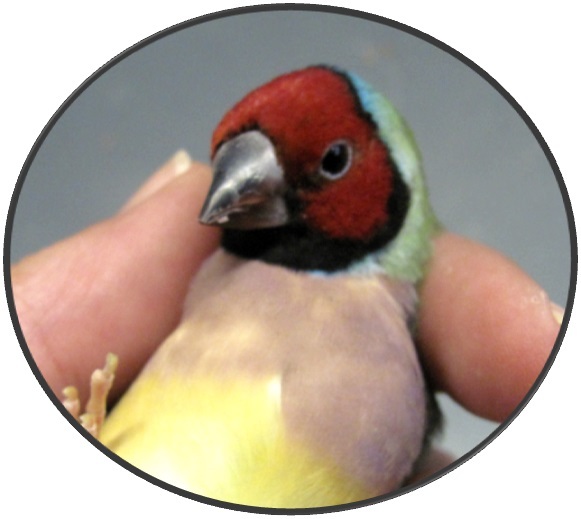
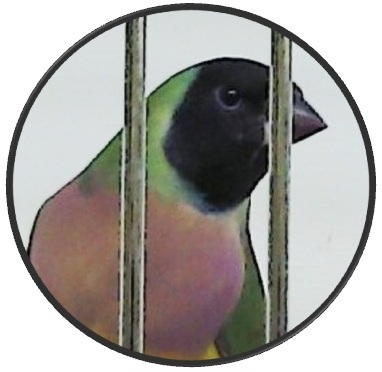
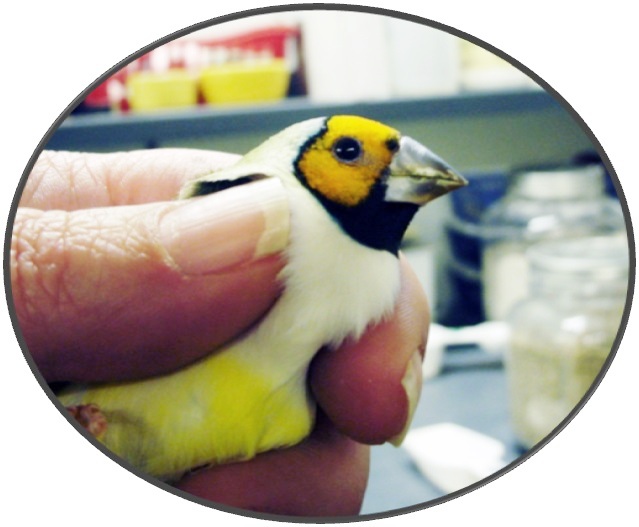
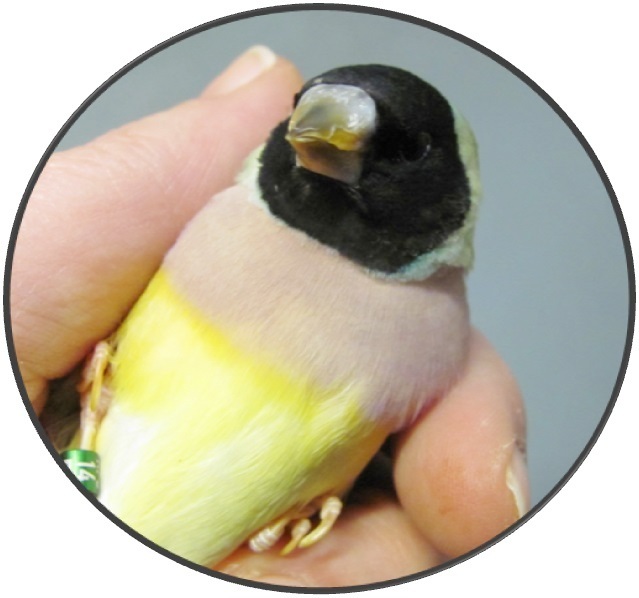
| BLACK HEAD-YTB | RED HEAD | BLACK HEAD | YELLOW HEAD |
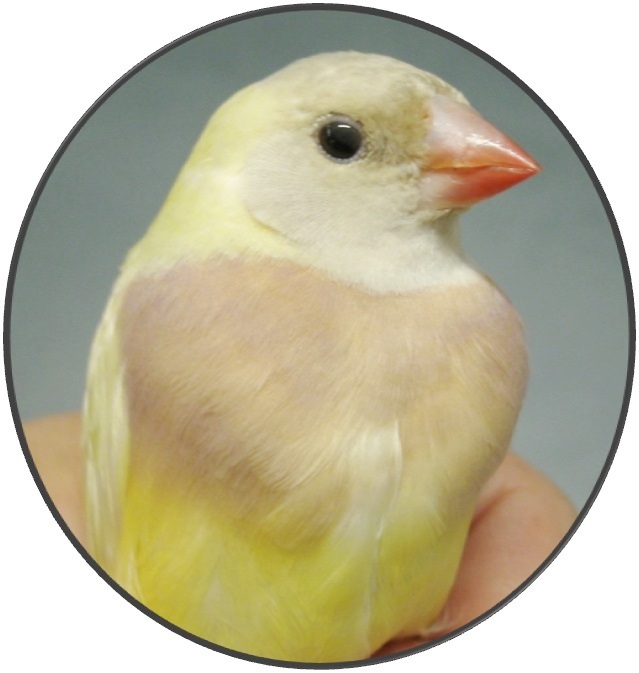
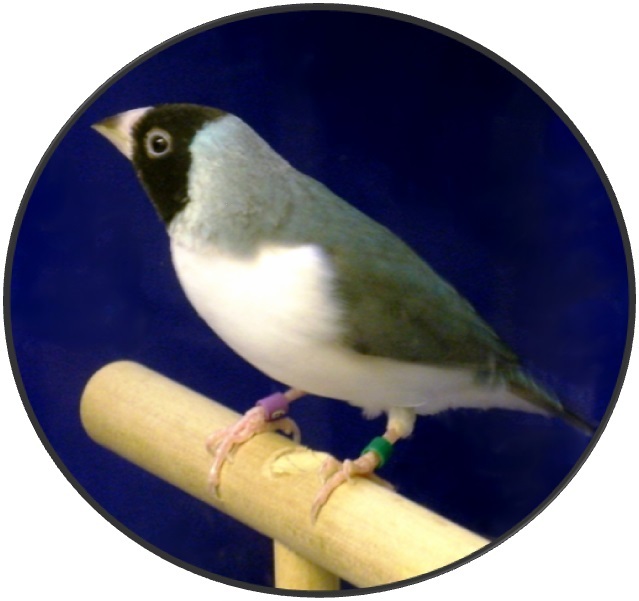
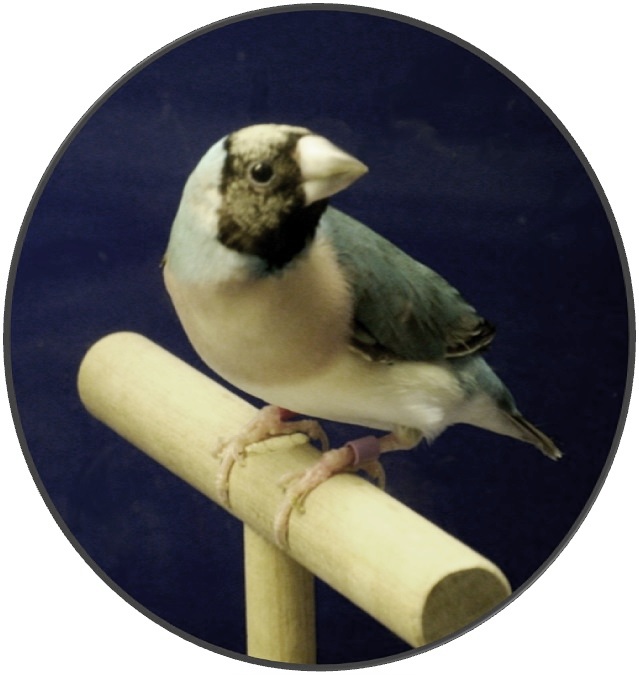
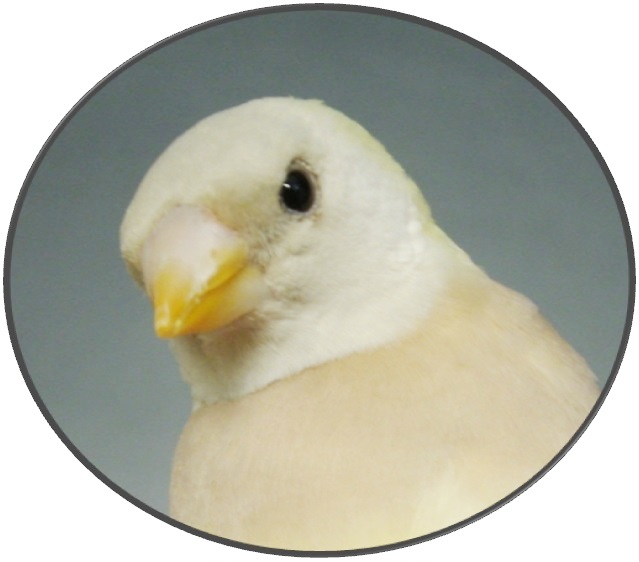
| YELLOW HEN | BH BLUE HEN | "STRAW HEAD" BLUE HEN | YELLOW HEN-YTB |
A hen in breeding condition will have a slate grey to very black beak. When ready to breed, she will drop her wings and arch her rump. The folks in my circle of breeders often call this "egg butt" - but it does not necessarily mean she is producing eggs just yet! If she is with a cock bird who is showing no signs of attempting to court her, she may poke him in the chest with her beak and chirp at him to get his attention if she likes him! It's her way of scolding him for not moving fast enough! Her abdomen and vent will become elongated in preparation for passing eggs, and her temperature will raise from a normal 104F to approximately 106-108F. This can be tested with a thermal temperature strip held tightly across the bare breast & abdomen of the bird.
COCKS:
A cock bird in breeding condition may begin to show signs of aggression toward other males in the cage. He may pick a fight, or he may sing, jump and court the other males. The tip of his beak will become a much darker shade of red or yellow, with the color spreading a bit further up the beak than when he's not in breeding condition.
EXCEPTIONS:
The beaks of YELLOW backed hens and cocks will remain red or yellow throughout the breeding season and will not turn black like a normal green backed bird. However, the beaks will turn a deeper red or yellow. Both male and female BLUE birds (as well as silvers and pastels) keep a silvery beak color throughout the year. It can be very difficult to determine when these mutations are in condition. Occasionally, a blue hen's beak will turn more slatey than normal, but in my experience, this is not usually the case.
In my aviary, hens typically come into condition about a month after they complete their annual molt. I use my "Molt Log" to determine when I should expect the birds to go through their molt, then when they should come into condition. I will NOT pair birds until they are fully in condition under any circumstances. Doing so is a recipe for disaster.
COMPATIBILITY:
If a cock bird is ready to breed, you may see him attempting to gain the attention of hens in other cages as he hangs from the cage bars and sings to them. When he sings, he will arch his neck, raising the feathers on the back of his head and grabbing the attention of a hen, he will drop his head down nearly to perch level and shake it very quickly back and forth. If the hen accepts his advances, she may also lower her head and shake it, but will usually tip her tail toward him and wag it as she stands on the perch. This is a sure sign that the two are compatible. It's time to give them a nest box and see what happens!
I truly recommend you pair only non-related, similarly aged birds of like coloration and genetics. You want to find a pair of birds who were born in the same month, and are of similar age. These birds will molt at approximately the same time and, if primed, will come into breeding condition at approximately the same time. When I say "primed", I am referring to having been fed the proper diet and given the right amount of light. If done properly, they will come into condition at the same time as well.
Unlike some canary cocks, Gouldian cocks usually help the hen raise the chicks. The cock bird may sit on the nest at night with the hen, or will stay very close nearby and keep a watchful eye over the nest. He may, like my good boys, sit with the hen during the day. The pair will also take turns sitting on the eggs, and relieving each other for short breaks. Once the chicks hatch, the cock will feed the young as often as the hen. They work together as a team to raise their young, thus the importance of a good match.
Of course there are always exceptions to every rule, but if you can follow these guidelines, you should see excellent results in your breeding flock.




